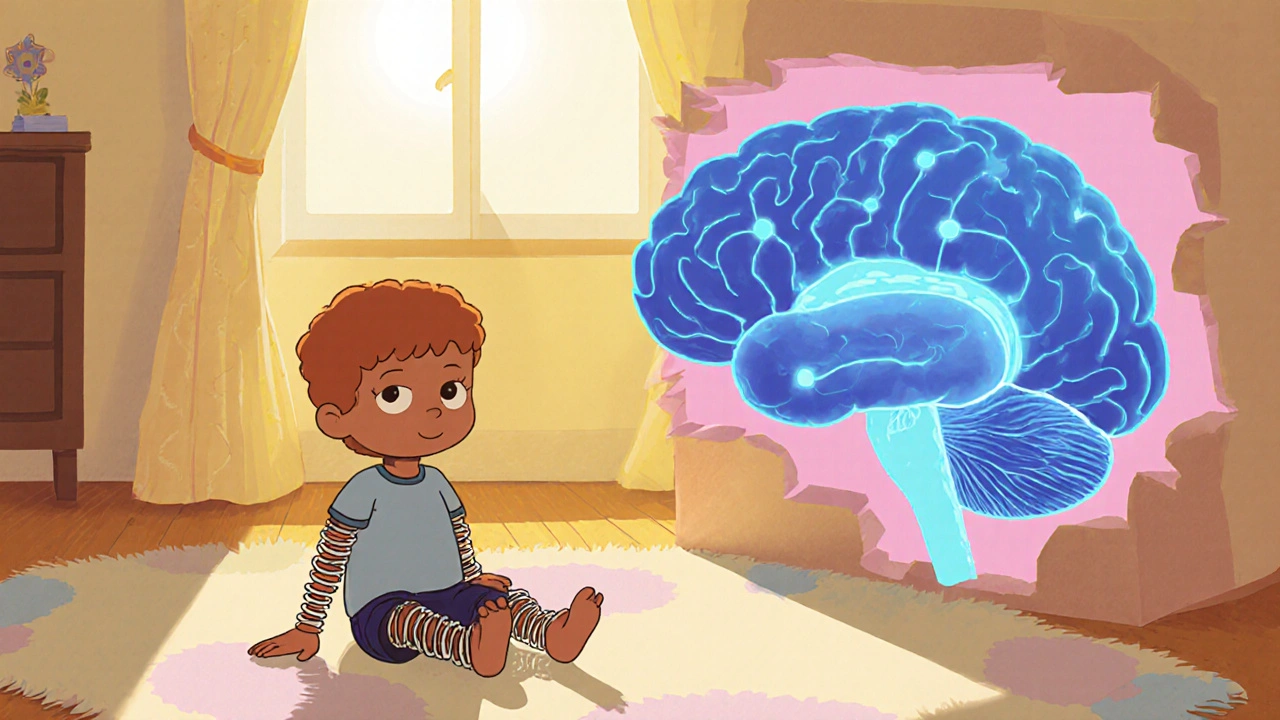Spastic Muscle States: Causes, Treatments, and Medications That Help
When muscles won’t relax and feel tight, stiff, or suddenly jerk, you’re dealing with spastic muscle states, a condition where muscles contract involuntarily due to nerve damage or brain injury. Also known as muscle spasticity, it’s not just cramping—it’s a persistent, often painful resistance to movement that makes walking, dressing, or even sleeping difficult. This isn’t something that goes away on its own. It’s a symptom, not a disease, and it shows up after strokes, spinal cord injuries, multiple sclerosis, cerebral palsy, or even severe brain trauma.
What makes spastic muscle states hard to manage is that they don’t follow a simple pattern. One person might have stiff legs that lock up at night, while another gets sudden, violent spasms in their arms. The root cause is always the same: damaged signals between the brain and muscles. But the treatment? That’s where it gets personal. Some people find relief with baclofen, a muscle relaxant that works on the spinal cord to calm overactive nerves. Others need diazepam, a benzodiazepine that reduces nerve firing and helps with both spasticity and anxiety. And for localized tightness—like a clenched hand or a foot that won’t point down—botulinum toxin, commonly known as Botox, blocks nerve signals right where the muscle is affected can make a huge difference without affecting the whole body.
What you won’t find in most guides is how these treatments actually fit into real life. Taking baclofen daily? You might need to time it around your commute or work schedule. Using Botox injections? You’ll need to plan for recovery time. And diazepam? It can make you drowsy—so driving or operating machinery isn’t safe. These aren’t just pills or shots. They’re tools that require strategy. The posts below dive into exactly that: real comparisons between medications, how they stack up against each other, what side effects to watch for, and when alternatives like physical therapy or nerve blocks make more sense. You’ll see how people manage spasticity with drugs like those used for high blood pressure, epilepsy, or even depression—not because they’re random, but because the nervous system doesn’t care about drug categories. It just responds to what works. Here’s what actually helps people move better, day after day.

How Spastic Muscle States Relate to Autism Spectrum Disorder
Explore the link between spastic muscle states and autism, covering prevalence, neurobiology, assessment tools, treatment options, and practical tips for families.
October 18 2025